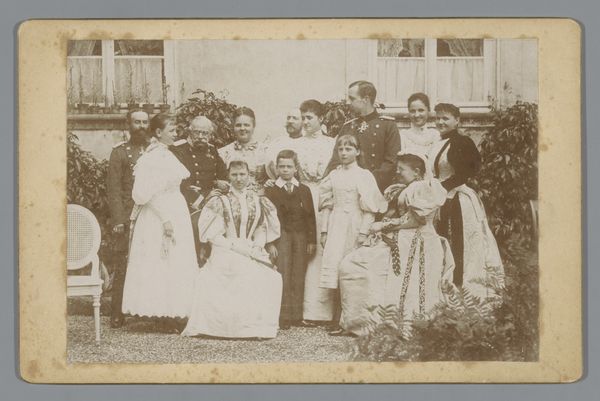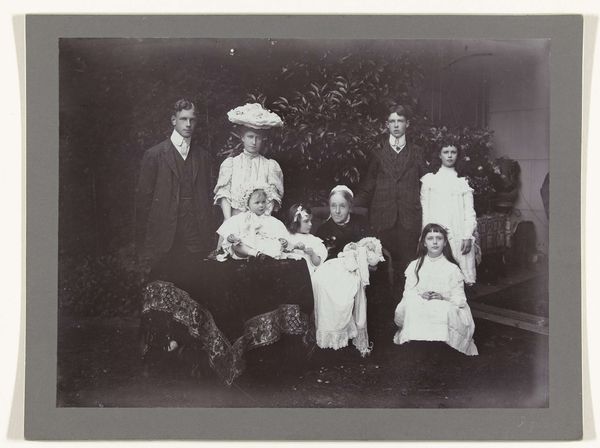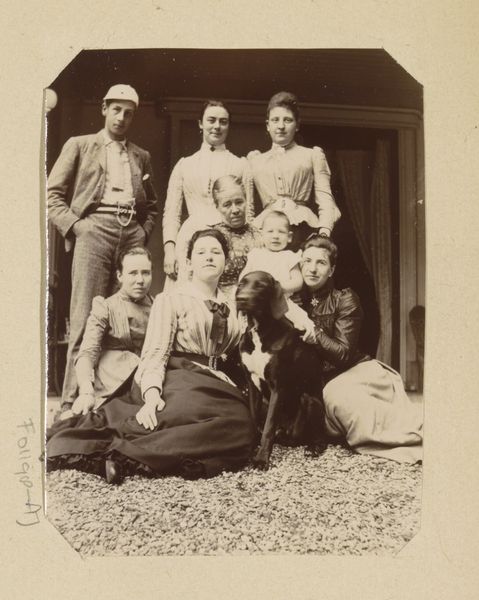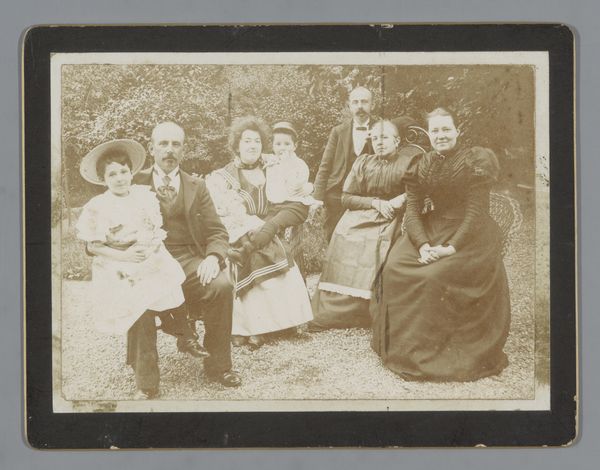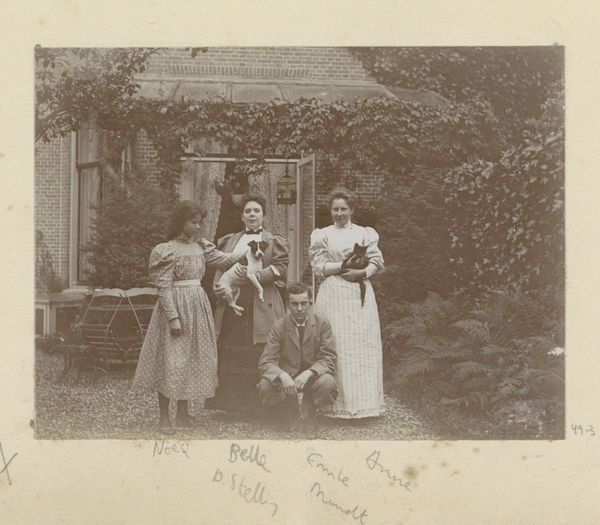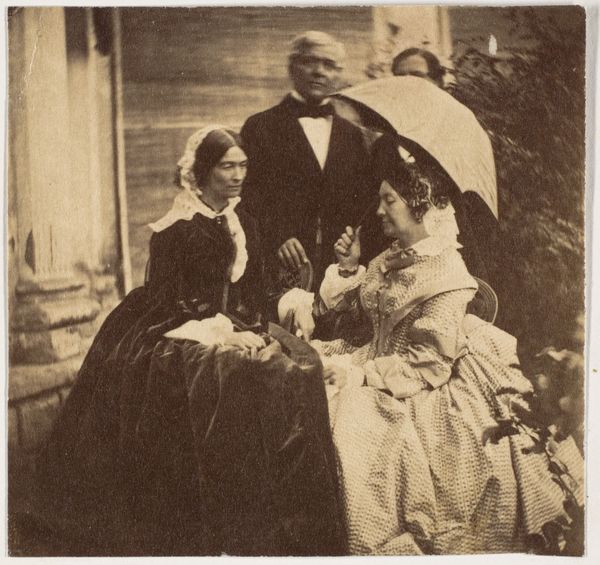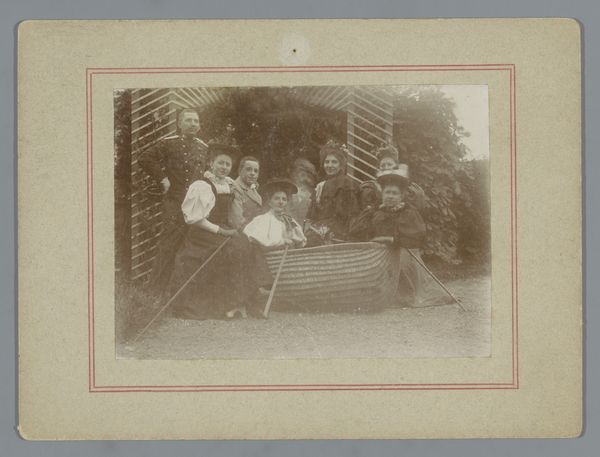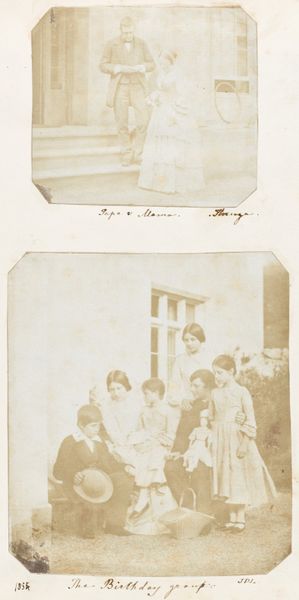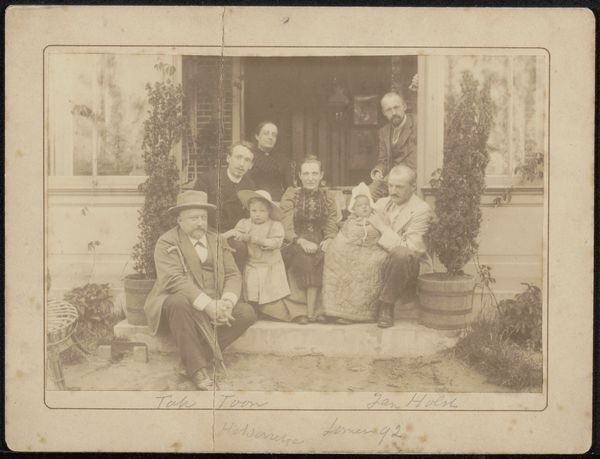
Groepsportret van pastoor Bercio met zijn familie in Klein Koslau 1890 - 1910
0:00
0:00
christianaugustusganderup
Rijksmuseum
#
yellowing
#
magazine cover layout
#
photo restoration
#
film poster
#
historical photography
#
old-timey
#
photo layout
#
19th century
#
word imagery
#
columned text
Dimensions: height 78 mm, width 110 mm
Copyright: Rijks Museum: Open Domain
Editor: Here we have "Groepsportret van pastoor Bercio met zijn familie in Klein Koslau," taken sometime between 1890 and 1910. The photograph presents a family gathering. There’s a formality to it, but what strikes me is the texture – the clothes, the foliage in the background, and even the aging of the photograph itself. How do you approach a piece like this? Curator: This photograph allows us to consider the material conditions of portraiture at the turn of the century. Think about the clothing; the heavy wool suits and elaborate dresses. These weren’t off-the-rack items. The very act of commissioning such garments signifies a certain level of economic privilege and a specific labor infrastructure required to produce these elaborate designs. Editor: So, the image speaks to the economics of the time. Curator: Precisely. The photographic process itself involved significant material resources – glass plates, chemicals, and the specialized knowledge required to operate the equipment. The final print then needed to be mounted and preserved. It was an investment, intended to communicate a message of status and familial unity. Consider the limited mobility required by those photographed. The subject sat, labored over the still image, creating value and demanding attention. Editor: I hadn't considered the materials and processes so directly contributing to the photograph’s meaning. It’s fascinating to think of it less as a candid moment and more as a product of material constraints and social pressures. Curator: Exactly! By focusing on the materials, we shift from viewing it solely as a quaint family portrait to understanding it as a tangible artifact embodying social and economic forces. What lasting thought does that understanding give you? Editor: I am considering the economics behind who and what is captured when creating art. This changes my consideration when viewing. Thanks!
Comments
No comments
Be the first to comment and join the conversation on the ultimate creative platform.
